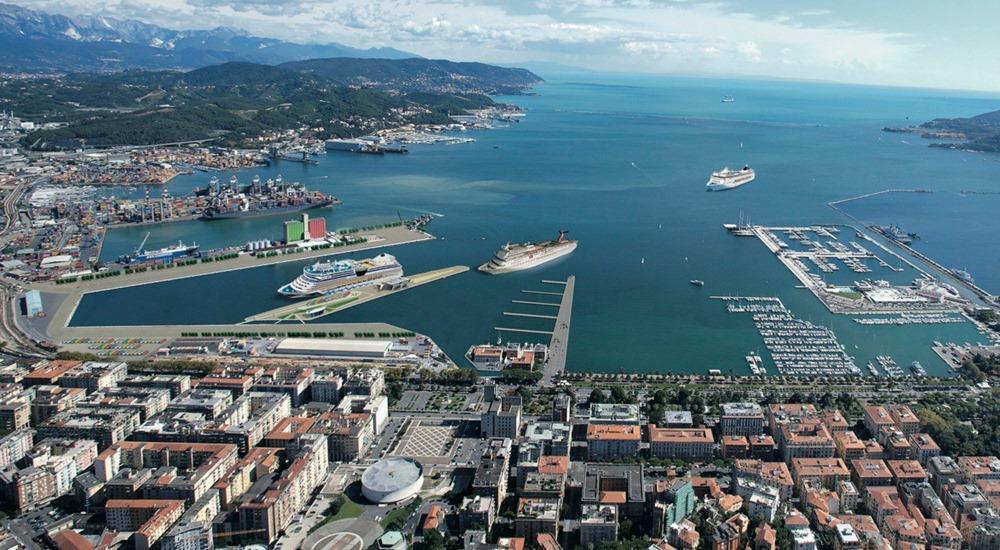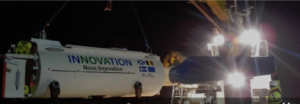
24 October 2018 – The ESPO Award 2018 will go to the port authority that creates a good workplace environment for its current and future employees and demonstrates its investment in a diverse and inclusive environment, facilitating mutual respect, non-discrimination and personal development.
In the running towards the official Award Ceremony on 7 November 2018, ESPO will be presenting the four projects. The third project is:
Port of Rotterdam Authority
The Port of Rotterdam creates a good working environment for everyone
ESPO: You are one of the four applicants of this year’s edition of the ESPO Award. Could you briefly describe your project and why it fits into this year’s specific theme, ‘Ports as a Good Work Environment for Everyone’?
We aim to create a good working environment for everyone by focusing on maximising the synergy between the port, the city, and the region.
To reach this goal of creating a good working environment, we have created various initiatives covering all ages and various educational backgrounds, which can be divided into three categories:
- School to Work: in a rapidly changing environment in which developments follow each other in rapid succession, it is essential to prepare employees with the right skills. One way to provide employees with these skills is the establishment of the RDM campus, the ‘IT and Technology Campus’ and the ‘Haven Havo’, by providing intermediate vocational education, stimulating IT and technology skills and offering a special port-focused curriculum to prepare young people (aged 12 to 17) for a rapidly changing world.
- Work to Work: it is crucial to prepare the port’s business community for new types of work. One of such initiatives is ‘Rotterdam Works’, a network offering voluntary labour mobility opportunities to employees. Participating employees will gain new work experience and will be better equipped for labour market orientation and professional development. Similarly, ‘Rotterdam’s Initiative for Social Innovation’ aims for greater cooperation and modernisation in the labour market and will deal with the question of how businesses can collaborate more in this area. A promising element in this project is that Port of Rotterdam Authority, Deltalinqs and labour union CNV are working together.
- Return to Work: the port offers numerous job opportunities to tackle the high unemployment rate in the region. Through various projects like ‘Ambachtslab Charlois’ and ‘Startbaan project’, together with the Municipality of Rotterdam, the port is seeking to assist people to gain the right skills, to match potential employees with the right job and to help young people to acquire basic qualifications. It is crucial to invest in people now in order for them to be useful in the future when they are needed.
ESPO: How does your project contribute to the societal integration of the port?
Thanks to our diverse set of initiatives, thousands of students, various formally unemployed people, and employees are currently working in the Port of Rotterdam. As Port Authority, we increased our visibility as a regional facilitator to create a good and sustainable working environment for all people. At the same time, we have established a network with firms from several industries, shared over 50 vacancies within the network and will organise a summit to discuss labour developments and the future of jobs in the Port. As our CEO Allard Castelein emphasises: “the Port of Rotterdam needs skilled hands and bright talents!”

ESPO: Could you describe the original and innovative character of your project?
The originality and innovative aspect of our project lies in the variety of the initiatives we created, as well as in the variety of the goals we pursue, which include giving employees skills fitting with the needs of companies in the port, providing future-oriented training for our current and future talents, and having as many people from Rotterdam and its surroundings as possible working in the port. In this way we create a circular economy of people to stimulate employee mobility between firms in the port.
ESPO: Why do you think your project deserves to win the ESPO Award 2018?
Winning this project will create awareness of the development of a good working environment for everyone by focusing on maximising the synergy between the port, the city and the region. Awards contribute to the motivation of employees, employers and other stakeholders to participate in our or similar projects and to stimulate co-working between a diverse set of stakeholders in the port. Finally, we would like to celebrate the creation of a good working environment with the people that work in and in surrounded areas of our port.
.jpg)
ESPO: How would you make your experience in developing the project available to other ports?
In order to unlock the potential of human capital and to ensure that ports meet the requirements of the new economy, the collaboration between different ports is highly needed. By joining forces in an effort to enhance social innovation, develop instruments and policies for ports and port firms and to develop future port jobs, new insights and knowledge from a diverse set of ports are needed. We are certain that together we can change things for the better.
Next, to sharing our experience and knowledge about human capital in the Port of Rotterdam, we aim to gather labour market information jointly, work towards work pathways and further strengthen the cooperation. Therefore, an informal, multi-organisational platform will be established in order to facilitate this process and to share our knowledge with other ports. The objective would be to exchange experiences and to learn from each other in order to establish a worldwide human capital agenda for ports 2018-2022!
“The Port of Rotterdam needs skilled hands and bright talents!”
Allard Castelein, CEO of Port of Rotterdam Authority
Source: ESPO












.jpg)
